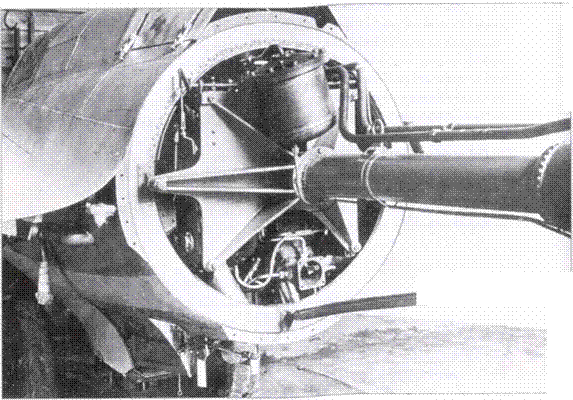ArE381
The desire for small or midget fighters which were cheap to turn out led from the summer of 1944 to a stream of suggested solutions, amongst them Arado’s Ar E 381 project for a small, well-armoured parasite design (that is one carried in the early stages of its flight by a ‘mother’aircraft). These small rocket-propelled aircraft with narrow fuselage cross-section and recumbent pilot not only provided enemy air gunners with little to aim at, but the protection was proportionately lighter than with full-size aircraft. This armour was mainly designed to protect the cockpit and the rocket unit. The Ar E 381 design of 1 December 1944 was for a machine only 4.95 metres (16 ft 3 in) long with an 8.5-metre (27 ft 10 in) wingspan. Two dismantled aircraft could be transported in the back of a long lorry. Because of the small size there was not much room for a fuel tank in the fuselage and probably only one attack could have been flown. For this reason Arado suggested that the fighter should be carried to its operational altitude by an Ar 234 C jet bomber. Once released the Ar E 381 would glide away, then build up speed under rocket propulsion, before diving into an Allied bomber formation at high velocity.
The Ar 234 C would follow in support of the parasite fighter whose attack would be made with a single MK 108 gun (45 rounds) located on the upper fuselage. The gunsight was a Revi 16 reflector sight or alternative. The pilot was protected by a massive armoured windshield. Contact with the mother aircraft was by EiV intercom radio unit.
To spare expense the parasite fighter was slung below the fuselage bay of the
Ar 234 and for this reason the pilot had to be recumbent. On returning to the ground the aircraft would deploy a parachute to soften the skid impact, enabling landings on even small areas. The pilot would land by preference near a highway, a glider landing field or a meadow. The fighter was easy to dismantle for quick return to its airfield. The demountable assembly consisted of three parts: the wings, the fuselage with cockpit and engine, and the tailplane. For ground maintenance the weapon and cover, perspex nose, skid and engine plant with cover could all be removed.

The low production cost of the parasite fighter, the ease of assembly and the separate involvement of fighter and parent aircraft favoured the Ar E 381/ Ar 234 C-3 combination. On 5 December 1944 Arado submitted a project proposal to the Chief-TLR for approval, but as all Ar 234 developments took second place behind the He 162 A-l and A-2, and the Me 262 A-l and A-2

by virtue of the Fuhrer-edict of 27 March 1945, further work on the Ar E 381 was suspended.










